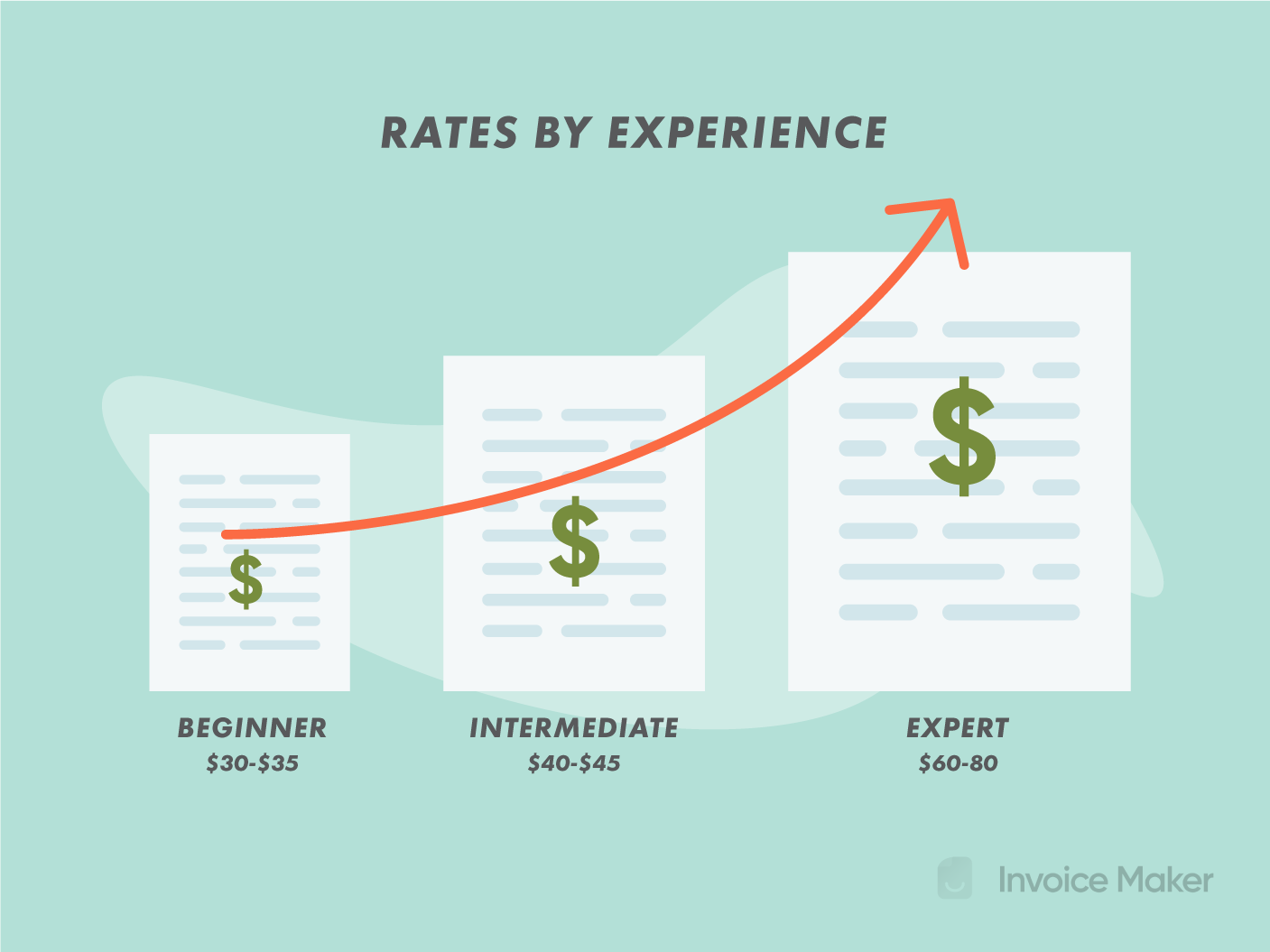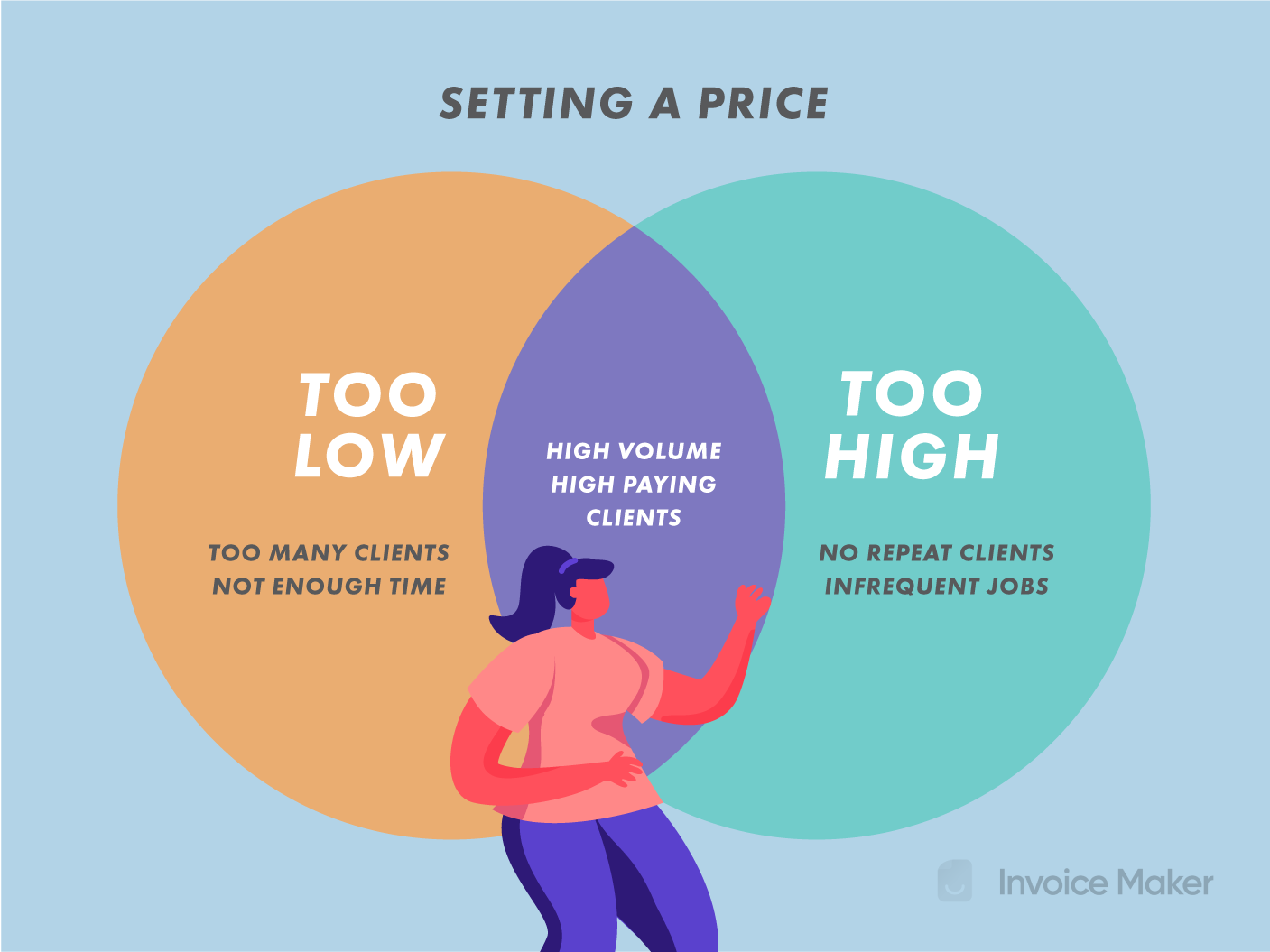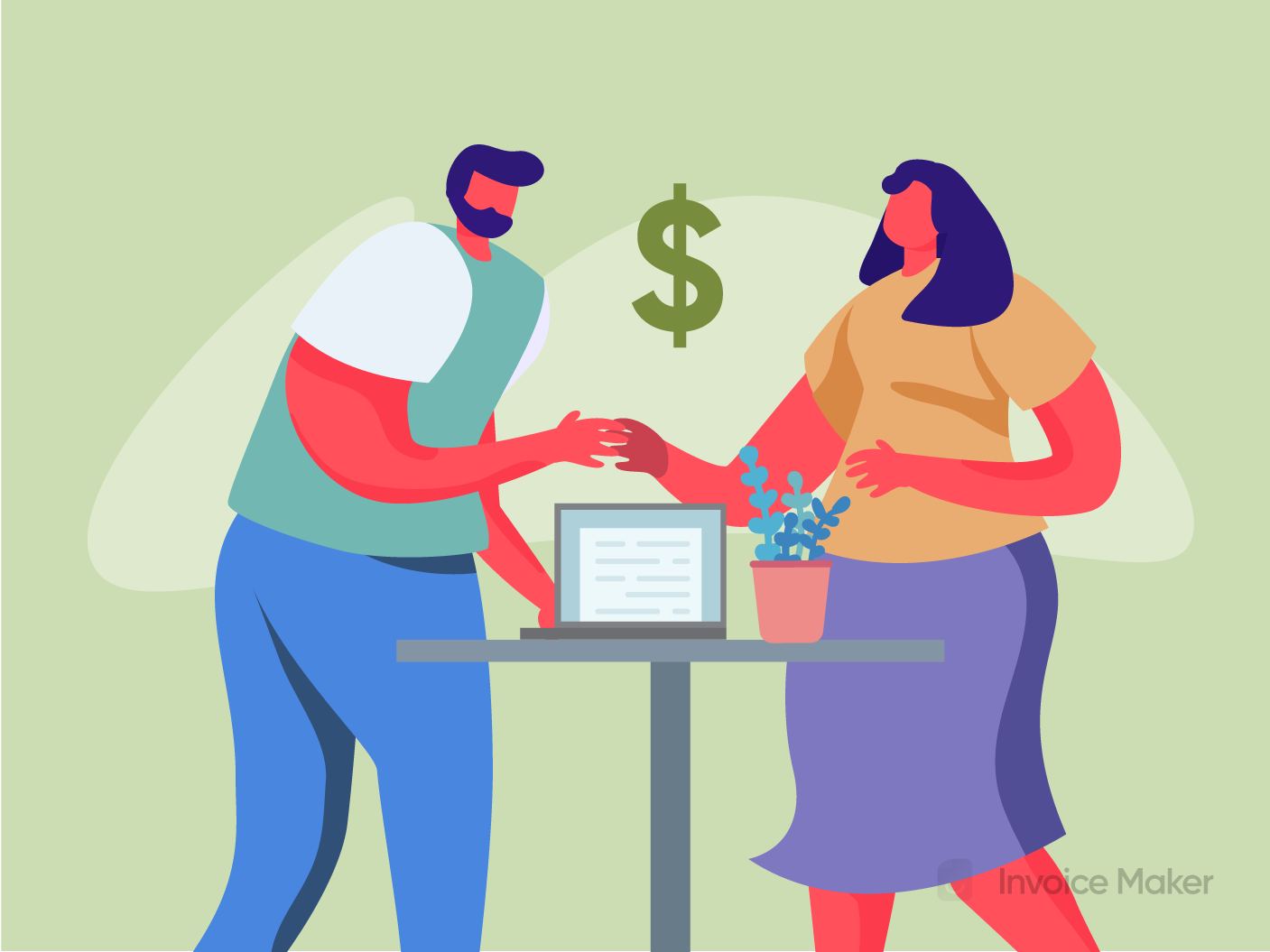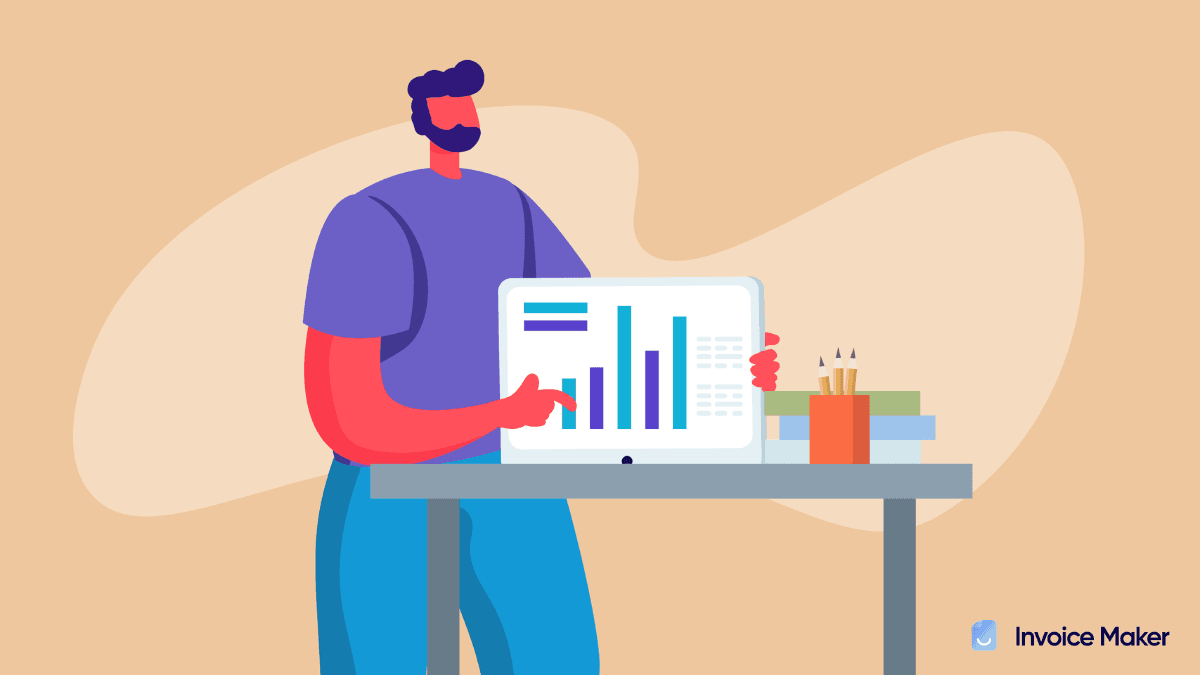How Much to Charge as a Freelance Graphic Designer
Graphic designers create visual communications. A graphic designer plays a role in creating most of the images you encounter online and in real life. Using colors, shapes, drawings, and words, they apply their skills to everything from marketing materials, business cards, and websites to book covers and brand logos. Occasionally, graphic designers work closely with — or pull double-duty as — artists and illustrators to create custom images.
Make a Free Invoice NowAs a graphic designer, you create visual communication that conveys the client’s brand identity to the consumer, so your role is critical. Graphic design is a popular field with many niches – here’s how to locate yours and price your services accordingly.
Hourly Graphic Designer Rates
It’s common for early-career freelance graphic designers to price hourly, and for a good reason. Hourly pricing is transparent, guaranteed to compensate for billable time, and allows you to reasonably estimate the workload before taking on jobs. The average hourly rate for a junior graphic designer is about $30, with the lowest rates starting near $15 an hour. Averages trend lower on freelance-aggregator sites like Upwork.
When starting, hourly pricing is a good model, but it is easy to outgrow. Once your mastery and efficiency increase, and your body of work proves your worth, a per-project billing model will serve much better. Most senior graphic designers move in that direction. For this reason, hourly rate averages tend to skew low, so think of that $30 average as a starting point, not a settling point.
Project-Based Graphic Designer Rates
Once you start charging per project, it’s wise to establish a range to price up or down depending on factors like the job’s complexity and desirability. One simple and solid tactic for pricing projects is to estimate how many hours are needed to complete the work, multiply that number by the desired hourly rate, and add 10% to account for potential underestimation.
Basic website design goes for $5,000-$10,000 (with significant wiggle room on the upper limit when building sites for national or global brands as opposed to local businesses), so if calculations land in that range, your pricing should fall well within the industry standards.
When it comes to project-based billing, you’re charging for your time and value. It’s fair to expect appropriate compensation for creating a public-facing image representing a client to the world with experience and skill. Because value can be harder to quantify than hours, pricing may become less formulaic over time.
Experience-Based Graphic Designer Rates

No matter how you charge, use an ideal hourly rate as the basis for calculations. Because assessing projects side by side can be like comparing apples and oranges, an hourly rate is a helpful control unit of measurement used to create estimates.
Beginning Graphic Designer
Early in your career, your rate should be somewhere in the $30-$35 per hour range. When transitioning from salary work with a robust portfolio and network, it’s fair to come in on the high end (or a little above) that range. But when starting a freelance business from scratch, the $30-$35 is a fair junior rate that a quality client won’t balk at.
Intermediate Graphic Designer
In the middle of a career, you’ll have some larger, more ambitious jobs in your portfolio demonstrating range, style, and ability to produce high-quality work on deadline. A rate at this stage should land between $40 and $55 per hour to reflect the growing value you bring to the table.
Experienced Graphic Designer
You can command a premium rate as a senior graphic designer with significant work and many large projects and campaigns under your belt. Industry-standard for a highly experienced graphic designer is $60-$80 per hour, but those who stand out from the pack with excellence or specialization can charge even more than that, up to about $150 hourly.
Factors That May Affect a Rate
Experience level is an obvious factor in determining your rate, but two other factors are even more critical: your marketing and negotiation skills. Because the graphic design market has a wide range of jobs (from low-priced one-off gigs to massive global brand campaigns), designers have a lot of power regarding where to position themselves in the industry and how to price their services.
In smaller markets, the remote nature of graphic design work is in your favor because you can work for clients in the highest-paying markets worldwide, like New York, Los Angeles, and London. Clients’ budgets will ultimately determine the income cap, so if the dream is to earn a comfortable full-time “salary,” build a business focused on serving those markets.
A specialization, like a user interface (UI) graphic or motion graphic design, sets you apart from the generalists and allows you to charge more than the average graphic designer at the same experience level. Pursue specialization through self-guided study, advanced courses at a college, university, or graphic design school, or intentionally seek work in the discipline for on-the-job learning.
Tips for Setting a Price

Thinking about your ideal business model while building a freelance practice is wise. In a perfect world, do you want a few high-volume, high-paying clients or many lower-volume and one-off clients? There are pros and cons to high-volume and low-volume, and ultimately it comes down to personal choice.
How to Know If a Rate is Too Low
If you have more clients than time to serve them, pricing is too low for your ideal business model. The move is to increase rates until you have fewer high-value clients. It’s a delicate operation to avoid pricing out of the market. To some extent, rely on the logic of supply and demand and adjust rates accordingly.
How to Know If a Rate is Too High
If clients repeatedly don’t return for more services after being satisfied with a job, or jobs are well-paying but very infrequent, your pricing may be too high. It’s worth experimenting with dropping rates slightly to see if that changes the inflow of work. There’s a sweet spot to hit by shifting rates up and down until you find it.
How to Negotiate With a Client

To earn the most possible amount of money, set rates on the high end and negotiate down rather than underpricing from the get-go. When setting rates with a new client, ask what their budget is to determine whether you are aligned on pricing.
If you want to charge $6,000 for a website design and their budget is $5,000, negotiating a sufficient number for both parties is likely possible. But if they only offer $3,000, it may not be worth delving into negotiations when they aren’t even in the same ballpark.
When to Increase a Rate
Whenever the value you bring to a client increases, raise rates. Increase personal value by:
- Gaining experience, new knowledge, and skills;
- Increasing efficiency or effectiveness; or
- Expanding the scope of work you perform.
It would help if you also built an incremental rate hike into client contracts. Always take a 5-10% annual cost of living increase. As a freelancer, you have to let clients know it’s time for a raise.
Great Potential for Skilled Designers
Graphic design brings together artistic, communication, and strategy skills and is essential to every business interacting with the public. Every doctor, lawyer, builder, and school has at least a logo, website, and associated materials. A graphic designer created the visual aspect for all those materials.
There is a vast well of work available, and if you market yourself right, it is possible to do very well as a freelance graphic designer.
